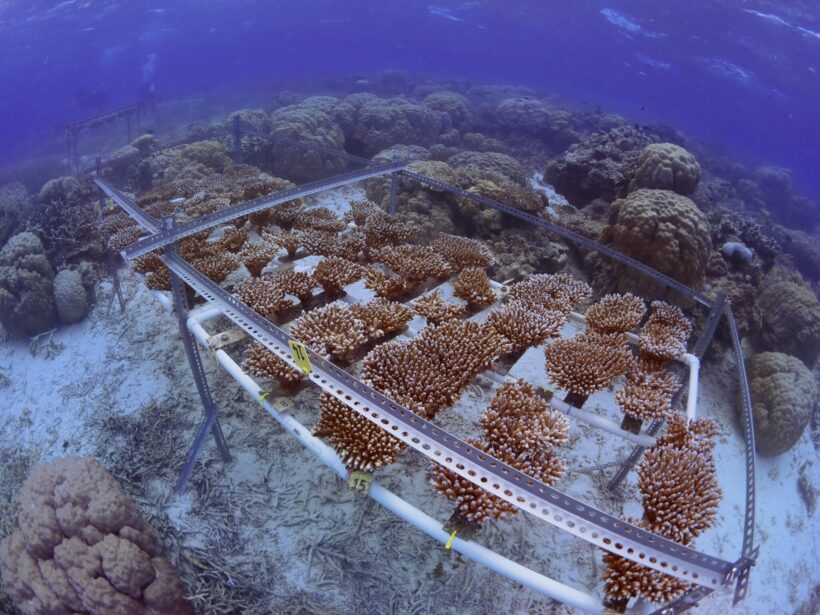Coral reefs throughout the world have suffered immensely from global heating due to human-caused climate change.
Australia’s Great Barrier Reef — the largest coral reef system in the world — has experienced four mass bleaching events in seven years, leading to die-offs in up to half of its shallow water reefs.
A new study has found that selectively breeding corals can lead to a moderate rise in their tolerance to marine heat waves.
“This work shows that selective breeding is feasible but not a silver bullet solution and that more research is needed to maximize breeding outcomes,” said Liam Lachs, lead author of the study and a Newcastle University postdoctoral research associate, in a press release from Newcastle University. “[R]apid reductions of global greenhouse gas emissions are an absolute requirement to mitigate warming and give corals an opportunity to adapt.”
The study, “Selective breeding enhances coral heat tolerance to marine heatwaves,” was published in the journal Nature Communications.
It was the first time researchers have selectively bred adult corals to be tolerant to intense marine heat waves. The success of the study demonstrated the possibility of improving adult coral offsprings’ heat tolerance, even in just one generation.
The improvement was modest, however, compared to the marine heat waves that are expected under the climate crisis in the future.
Dr. James Guest, a coral reef ecology reader in the School of Natural and Environmental Sciences at Newcastle University, explained that “the results show that selective breeding could be a viable tool to improve population resilience. Yet, there are still many challenges that need to be overcome. How many corals need to [be] outplanted to benefit wild populations? Can we ensure there are no trade-offs (evidence so far suggests this is not a large risk)? How can we avoid dilution of selected traits once added to the wild? How can we maximize responses to selection?”
Guest emphasized that the moderate enhancement of heat tolerance levels that were achieved meant breeding’s effectiveness would depend on “urgent climate action.”
Marine ecosystems bear the brunt of the impacts of climate change, as reef corals are highly sensitive to changes in sea surface temperatures.
The research team conducted selective breeding experiments for either short intense heat exposure tolerance — 10 days of an increase in temperature of 3.5 degrees Celsius — or long-term, less-intense exposure that is more typical of marine heat waves in the natural environment — one month of an increase reaching 2.5 degrees Celsius.
The team discovered that the selection of parent colonies for high instead of low heat tolerance increased their adult offspring’s endurance. The result was true in both the longer and shorter exposures. The level of heat increase is not likely to be enough to keep up with unabated warming.
Breeding for tolerance to a short duration of heat stress did not show offsprings’ ability to survive long exposure to heat stress.
“This would have important implications, as interventions would benefit from cheap and rapid assays that can effectively identify heat tolerant colonies for breeding,” the press release said. “However, if these assays do not predict adult colony survival to natural marine heat waves, it presents a serious challenge for management interventions.”
Dr. Adriana Humanes, lead author of the study and a postdoctoral research associate at Newcastle University’s Coralassist Lab, said that “considerable work remains before selective breeding can be successfully implemented. A deeper understanding is needed to determine which traits to prioritize and how these traits are genetically correlated.”
Cristen is a writer of fiction and nonfiction. She holds a JD and an Ocean & Coastal Law Certificate from University of Oregon School of Law and an MA in Creative Writing from Birkbeck, University of London. She is the author of the short story collection The Smallest of Entryways, as well as the travel biography, Ernest’s Way: An International Journey Through Hemingway’s Life.






